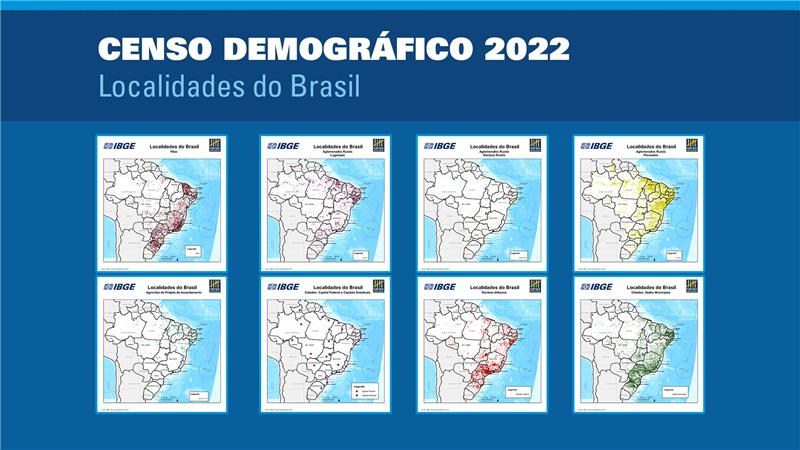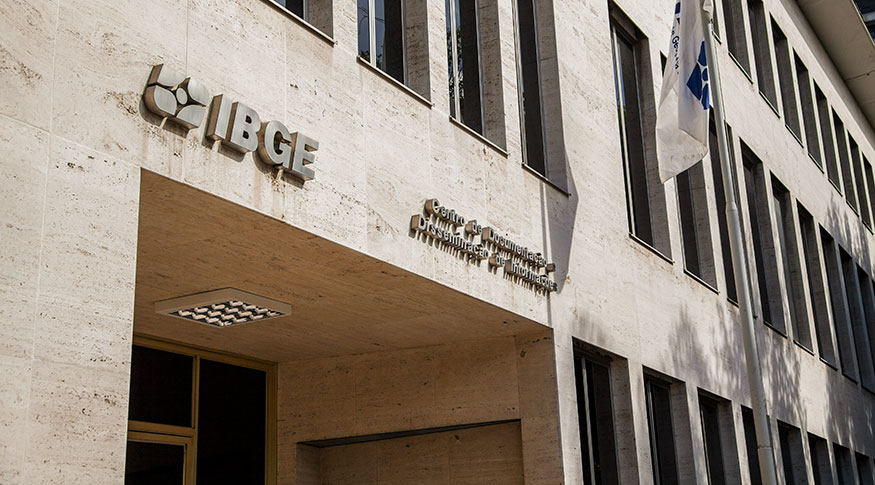Continuous PNAD
With pandemic, 20 states have record average unemployment rate in 2020
March 10, 2021 09h00 AM | Last Updated: March 10, 2021 04h05 PM

The average unemployment rate in 2020 was a record in 20 Brazilian states, following the national average, which increased from 11.9% in 2019 to 13.5% last year, the highest one in the time series of the Continuous PNAD, started in 2012. The highest rates were registered in the states of the Northeast and the lowest ones, in the South. These figures are due to the effects of the Covid-19 pandemic on the labor market.
The data came from the Continuous National Household Sample Survey - Continuous PNAD, released today (10) by the IBGE.
In 2020, the highest unemployment rates were in Bahia (19.8%), Alagoas (18.6%), Sergipe (18.4%) and Rio de Janeiro (17.4%), whereas the lowest ones were in Santa Catarina (6.1%), Rio Grande do Sul (9.1%) and Paraná (9.4%).
Within a year, the employed population reduced by 7.3 million persons in Brazil, reaching the lowest figure in the annual series (86.1 million). As a result, less than half of the population at working age was employed in Brazil for the first time ever. In 2020, the employment-population ratio was 49.4%.
The employment-population ratio stood below 50% in 15 states, being all the states in the Northeast, five of the North and Rio de Janeiro. In Alagoas, only 35.9% of the persons at working age were employed. In Rio de Janeiro, only 45.4% had a job. On the other hand, Mato Grosso was the state with the highest employment-population ratio (58.7%) last year.
The drop of the employment was widespread along all the workers. The average informality rate also retreated, changing from 41.1% in 2019 to 38.7% in 2020, adding up to 39.9 million people. Informal workers are those without a formal contract, domestic workers without a formal contract, employers without CNPJ, self-employed workers without CNPJ and assisting family workers.
In the regions, the national average informality rate was surpassed in 19 states, varying from 39.1% in Goiás to 59.6% in Pará. In seven out of these states, the informality rate surpassed 50% and only São Paulo (29.6%), the Federal District (28.2%) and Santa Catarina (26.8%) registered informality rates below 30%.
"The drop in the informality is not related to more formal workers in the labor market. It is related to the fact that informal workers lost their jobs along the year. With less informal workers in the composition of employed persons, the informality rate decreases," explains Adriana Beringuy, an analyst of the survey, reminding that informal persons were the first to be hit by the effects of the pandemic.
| Unemployment Rate Annual averages (in %) |
|||||||||
|---|---|---|---|---|---|---|---|---|---|
| 2012 | 2013 | 2014 | 2015 | 2016 | 2017 | 2018 | 2019 | 2020 | |
| Brazil | 7.4 | 7.1 | 6.8 | 8.5 | 11.5 | 12.7 | 12.3 | 11.9 | 13.5 |
| Rondônia | 6.4 | 5.1 | 4.2 | 5.6 | 7.9 | 8.2 | 9.1 | 8.0 | 10.4 |
| Acre | 8.4 | 9.0 | 7.7 | 8.5 | 10.9 | 14.1 | 13.5 | 14.5 | 15.1 |
| Amazonas | 9.5 | 9.1 | 7.7 | 9.5 | 13.6 | 15.7 | 13.9 | 14.0 | 15.8 |
| Roraima | 7.6 | 8.0 | 6.3 | 8.5 | 8.8 | 9.9 | 12.3 | 14.9 | 16.4 |
| Pará | 7.4 | 7.3 | 7.2 | 8.8 | 11.2 | 11.8 | 11.1 | 10.8 | 10.4 |
| Amapá | 13.2 | 11.5 | 10.3 | 11.0 | 15.5 | 17.7 | 20.2 | 17.4 | 14.9 |
| Tocantins | 7.7 | 7.5 | 7.5 | 8.6 | 11.5 | 11.7 | 10.6 | 10.8 | 11.6 |
| Maranhão | 8.1 | 7.9 | 6.8 | 8.6 | 11.9 | 14.3 | 14.4 | 14.3 | 15.9 |
| Piauí | 6.9 | 7.5 | 6.5 | 7.6 | 9.4 | 12.9 | 12.8 | 12.8 | 12.8 |
| Ceará | 7.7 | 7.8 | 7.4 | 8.8 | 12.0 | 12.6 | 11.3 | 10.9 | 13.2 |
| Rio Grande do Norte | 11.4 | 10.7 | 11.0 | 12.0 | 14.2 | 14.5 | 13.6 | 13.1 | 15.8 |
| Paraíba | 9.2 | 8.8 | 8.9 | 9.5 | 11.4 | 11.4 | 11.1 | 11.6 | 14.6 |
| Pernambuco | 9.1 | 9.0 | 8.2 | 9.9 | 14.6 | 17.7 | 16.7 | 15.5 | 16.8 |
| Alagoas | 11.4 | 10.6 | 9.6 | 11.2 | 14.1 | 16.7 | 17.0 | 14.9 | 18.6 |
| Sergipe | 10.3 | 10.3 | 9.2 | 9.1 | 13.3 | 14.3 | 16.6 | 15.1 | 18.4 |
| Bahia | 11.1 | 11.2 | 10.3 | 12.3 | 15.9 | 17.0 | 17.0 | 17.2 | 19.8 |
| Minas Gerais | 6.9 | 6.6 | 6.7 | 8.5 | 11.1 | 12.2 | 10.7 | 10.1 | 12.5 |
| Espírito Santo | 7.1 | 7.1 | 6.2 | 7.7 | 12.2 | 13.1 | 11.5 | 11.0 | 12.7 |
| Rio de Janeiro | 7.5 | 6.8 | 6.3 | 7.6 | 11.7 | 14.9 | 15.0 | 14.7 | 17.4 |
| São Paulo | 7.3 | 7.2 | 7.1 | 9.3 | 12.4 | 13.4 | 13.3 | 12.5 | 13.9 |
| Paraná | 5.0 | 4.3 | 4.0 | 5.9 | 8.2 | 9.0 | 8.8 | 8.5 | 9.4 |
| Santa Catarina | 3.4 | 3.1 | 2.9 | 4.1 | 6.3 | 7.1 | 6.4 | 6.1 | 6.1 |
| Rio Grande do Sul | 4.8 | 4.8 | 5.0 | 6.2 | 8.2 | 8.4 | 8.1 | 8.0 | 9.1 |
| Mato Grosso do Sul | 6.1 | 4.7 | 4.1 | 6.1 | 7.7 | 8.5 | 7.6 | 8.0 | 10.0 |
| Mato Grosso | 5.5 | 4.4 | 4.0 | 6.1 | 9.4 | 9.0 | 7.9 | 8.0 | 9.7 |
| Goiás | 5.4 | 5.4 | 5.3 | 7.3 | 10.5 | 10.6 | 9.2 | 10.6 | 12.4 |
| Federal District | 8.6 | 9.0 | 9.0 | 10.1 | 12.0 | 13.2 | 12.7 | 13.4 | 14.8 |
| Source: IBGE - PNAD Contínua | |||||||||
| Minimum value of the FU | |||||||||
| Maximum value of the FU | |||||||||
Unemployment retreats only in five states in Q4
In the last quarter of 2020, the unemployment rate – which retreated to 13.9% after hitting 14.6% in the third quarter, the highest level ever registered in the quarterly comparison – reduced only in five states, remaining stable in the others. The highest rates were recorded in Bahia and Alagoas, both with 20%, followed by Rio de Janeiro (19.4%). The lowest rates were in Santa Catarina (5.3%), Rio Grande do Sul (8.4%) and Mato Grosso do Sul (9.3%).
"When we look at the regional data, we notice that the reduction in the unemployment rate was not widespread across most Federation Units. It was concentrated on only five, showing that a number of states did not notice any drop in the unemployment," stated Adriana Beringuy.
Unemployment was 11.9% among men and hit 16.4% among women in the last quarter of 2020
The Continuous PNAD also shows a difference in the unemployment rate of men and women in the fourth quarter of 2020. The percentage was 11.9% among men and 16.4% among women. Among black persons, the rate was 17.2%, whereas that of brown persons was 15.8%, both of them above the national average (13.9%). The rate of white persons (11.5%) stood below the average.
The youngsters were those mostly affected by unemployment among the age groups in the fourth quarter. Persons aged between 14 and 17 years (42.7%), between 18 and 24 years (29.8%) and between 25 and 39 years (13.9%) posted rates higher than or equal to the national average.
For the persons with incomplete secondary education (23.7%), the unemployment rate was higher than those of the other schooling levels. The rate for the group of persons who had not finished higher education was estimated at 16.9%, more than twice the rate reported by those with complete higher education (6.9%).
The composite rate of labor underutilization – percentage of unemployed persons, time-related underemployed persons or persons in the potential workforce in relation to the extended workforce - was higher in Bahia (33.3%), Piauí (33.3%) and Sergipe (32.2%). Thirteen Federation Units stood below the national average (20.7%), being Santa Catarina the lowest one (7.5%). It was followed by Rio Grande do Sul, Mato Grosso do Sul and Mato Grosso, the three of them with 14.1%.

















